Florence, Italy has been called an outdoor museum for good reason. Its streets are full of so much sculpture and architecture that one need not enter a museum to see many works of great artistic significance. In fact, during my third stay there, I spent three weeks in the city and did not go in a single museum! This is partly because of this great collection of sculpture in the Piazza della Signoria in the center of Florence.
Piazza della Signoria Sculptures
The city’s finest collection of outdoor sculpture is found outside the Palazzo Vecchio, Florence’s city hall. An impressive array stand next to the Palazzo, in the Loggia dei Lanzi, built in the late 14th century to house public ceremonies. While many of Florence’s treasures are from the Renaissance, these sculptures in the loggia are from various periods.
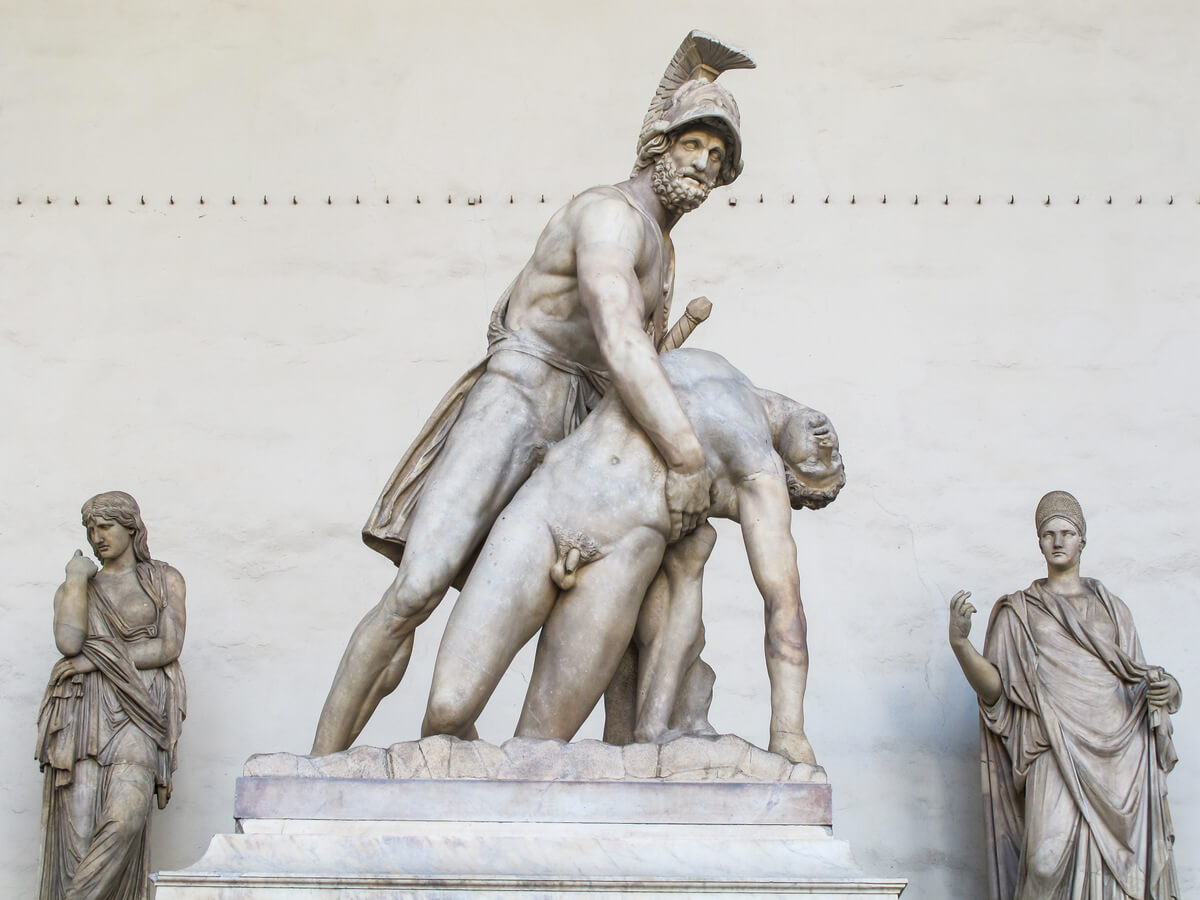
Giambologna’s Rape of the Sabine Woman
One of the most striking sculptures I have ever seen is Giambologna’s Rape of the Sabine Woman, and there it is, sitting outside as it has been for the last few hundred years. Art historian Frederick Hartt called it “the swan song of Late Renaissance sculpture in Florence.” It is from the years 1581-1583, well after the Renaissance when a new group of artists was dominating Florence’s art scene: the Mannerists.
Giambologna was an accomplished sculptor– here he displays Mannerism’s fondness for experimenting with the unusual. In this serpentine composition, the three bodies twist upwards, forcing our eye away from the the center, and instead up to the agony in the woman’s face and outstretched arm.
Behind Rape of the Sabine Woman stand another Giambologna sculpture and one of several ancient Roman female figures discovered in Rome in 1541.
Cellini’s Perseus and Medusa
Another sculpture that is hard to miss is Cellini’s Perseus and Medusa from the years 1545-1554 when the Renaissance was, shall we say, winding down. While the technique here is incredible, from the ornate tufts of hair and blood to the exact anatomy in Perseus’s body, the sculpture seems devoid of emotion. The sculpture and its pedestal are beautiful, but the intensity or excitement of Renaissance masterpieces is lacking.
As with most places in Florence, the Piazza della Signoria and Loggia dei Lanzi can be crowded, full of people sitting around on its steps, mostly unaware of the history surrounding them in these sculptures. Try visiting in the evening, when the Piazza is lit up, and in the winter, when there are far fewer crowds.
Michelangelo’s David Copy Outside the Palazzao Vecchio
One of the most recognizable sculptures in the world is Michelangelo’s David. Even though the one standing outside the Palazzo Vecchio is a copy, its location here in the Piazza della Signoria is not at all random.
Michelangelo was commissioned to sculpt David for the façade of Florence’s basilica, Santa Maria del Fiore, but when he was finished, it was considered too incredible to be put up where people could not see it up close. It was decided that it should stand at the entrance of the city hall where David’s determined look and physical power would symbolize the strength of the republic.
Read more: 30 Best Things to Do in Florence
Bandinelli’s Hercules and Cacus
On the other side of the entrance stands Baccio Bandinelli’s Hercules and Cacus. This sculpture has never been everyone’s cup of tea, and here’s why. Bandinelli and other artists of the 16th century tried to emulate Michelangelo but failed, and this may be even more obvious with Bandinelli’s piece.
Like the David, it stands outside the city hall and reflects a story of triumph and strength, serving as a reflection of the city’s power. But instead of being humbled by its beauty and humanity, the viewer may be left feeling slightly uneasy. The figures are a bit ugly with their overly-developed faces and muscles. Just because it stands next to David in the famous Piazza della Signoria does not mean this is a masterpiece of the Renaissance!
The Fountain of Neptune
Next to the Palazzo Vecchio stands the square’s most imposing sculpture, the huge Fountain of Neptune by Bartolomeo Ammannati from 1575. Neptune stands in the center on top of a shell-shaped horse-drawn chariot. He is surrounded by tritons, satyrs, two men with dolphins, two women with putti (small angelic figures) and fauns.
This fountain was commissioned by Cosimo I in the mid 16th-century and reflects the style of late Renaissance and Mannerism. Because of its location, it has suffered from vandalism and other damage since its early years. It was restored in 2019 and now looks glorious!
Read more: Italy Travel Tips
The Equestrian Monument of Cosimo I
Next to the Fountain of Neptune in the Piazza della Signoria is the Equestrian Monument of Cosimo I by Giambologna from 1587-94. This statue honors Cosimo I in the tradition of showing powerful rulers on horseback. Under the horse are reliefs that depict scenes from life of Cosimo I.
Have you seen the sculptures in the Piazza della Signoria, outside the Palazzo Vecchio and in the Loggia dei Lanzi? What did you think?
Photo credit: David: Sarah-Rose on Flickr

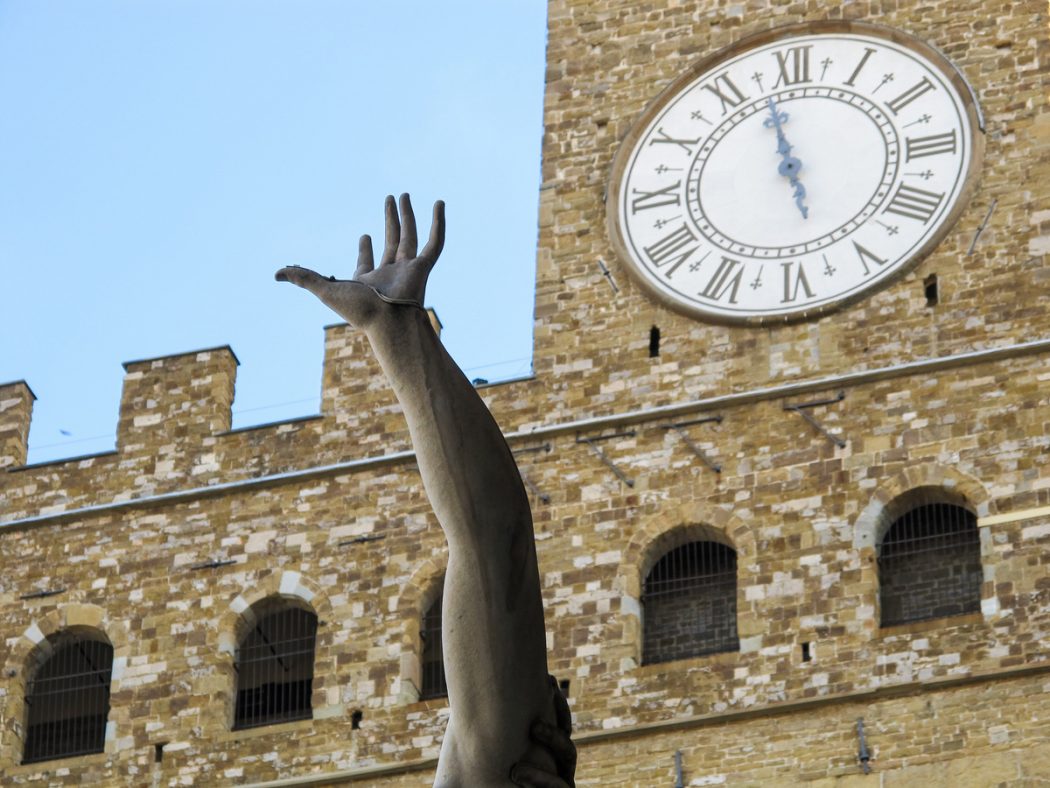
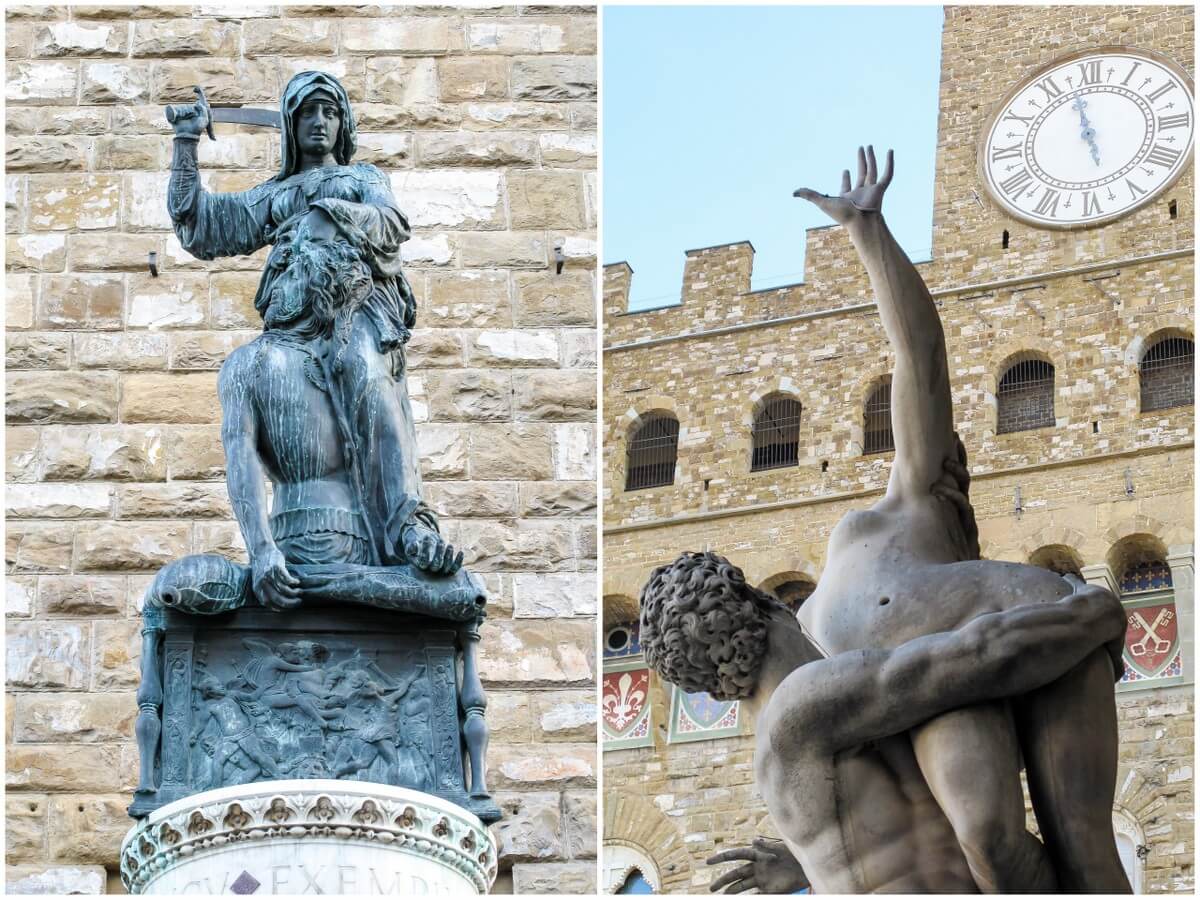
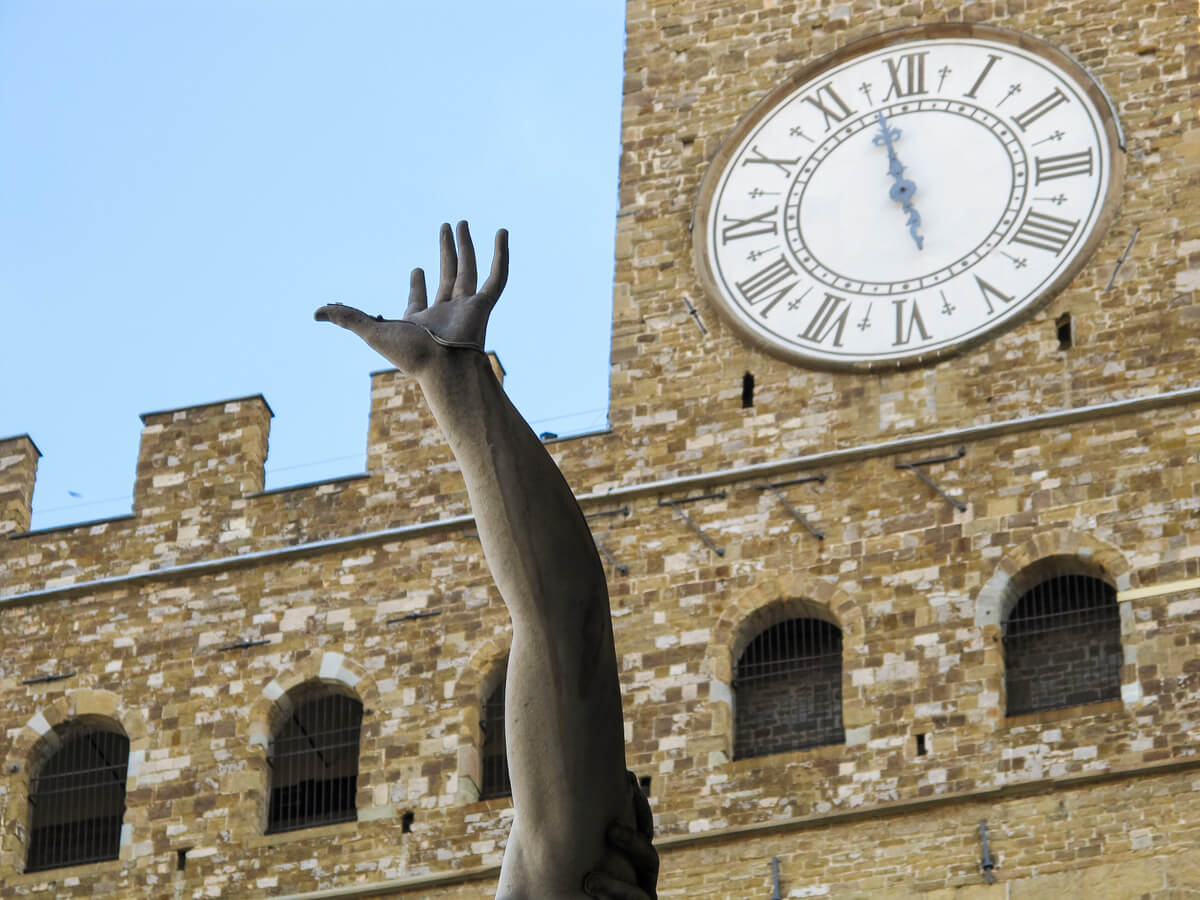
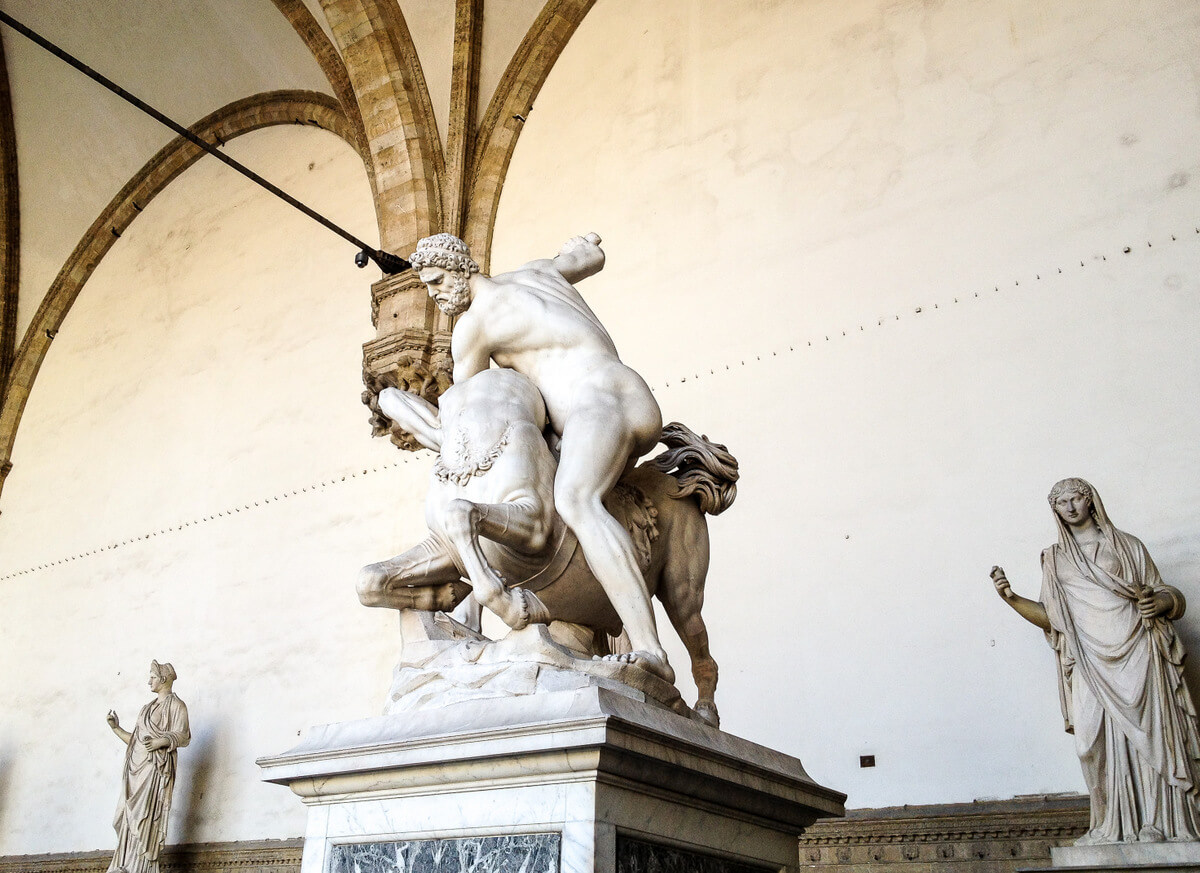
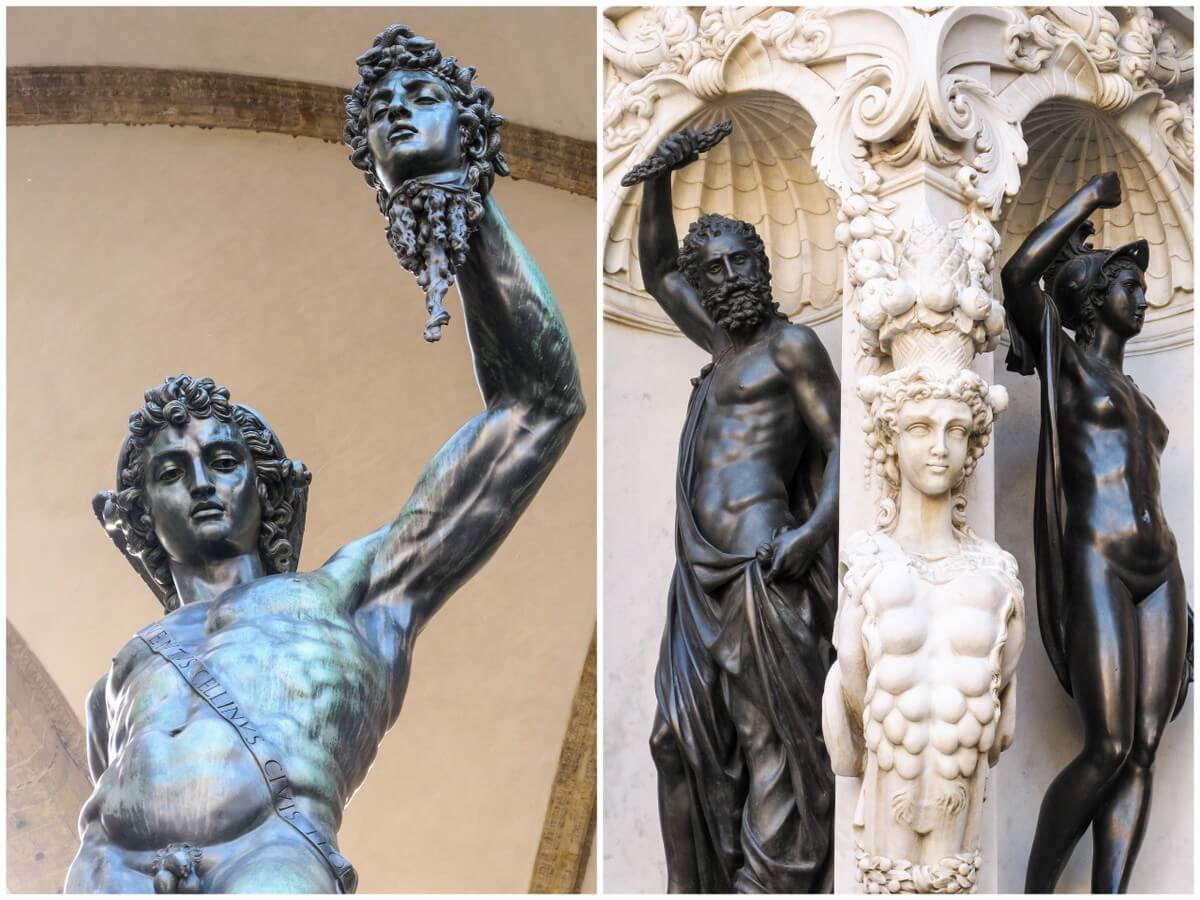
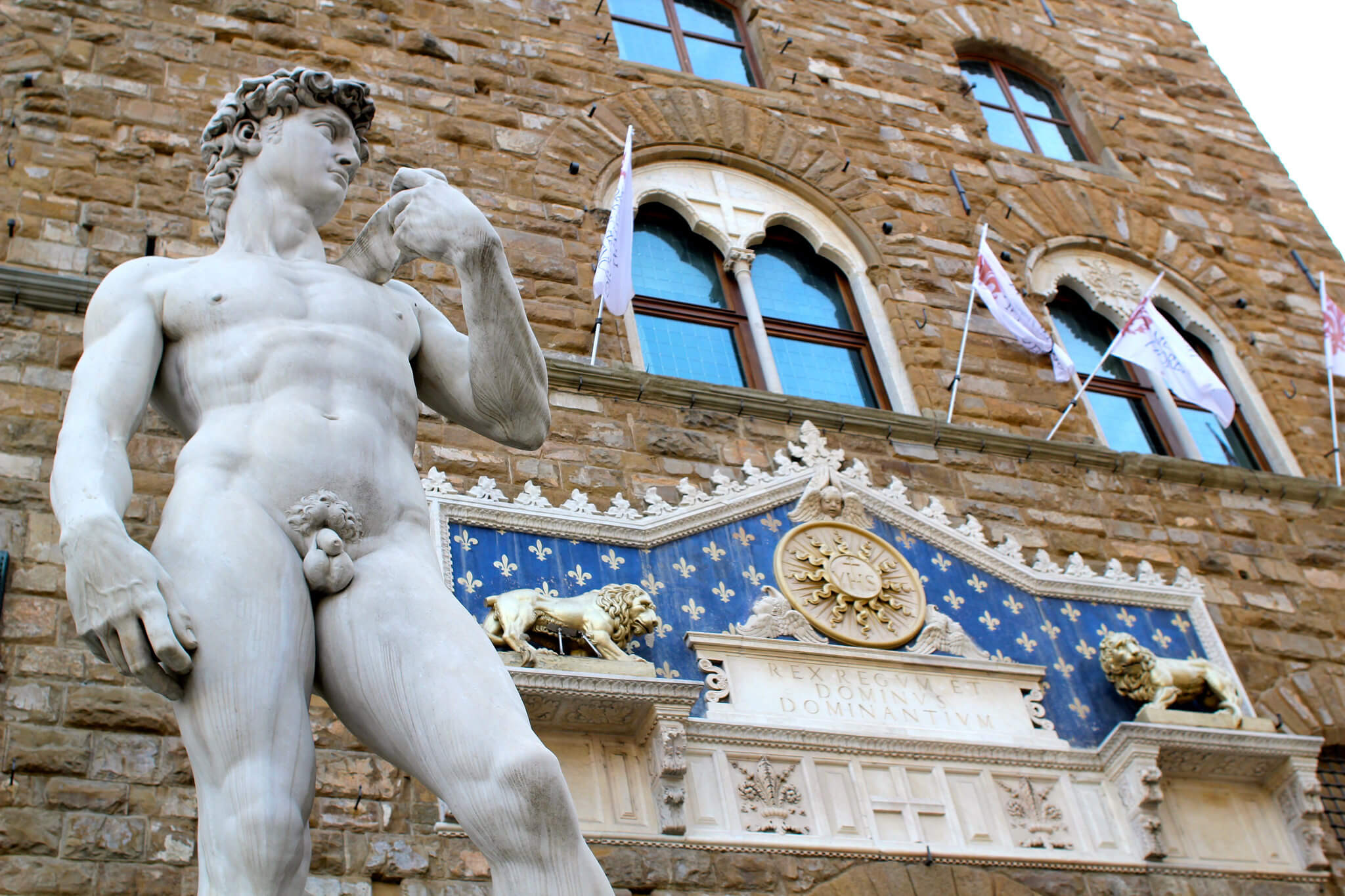
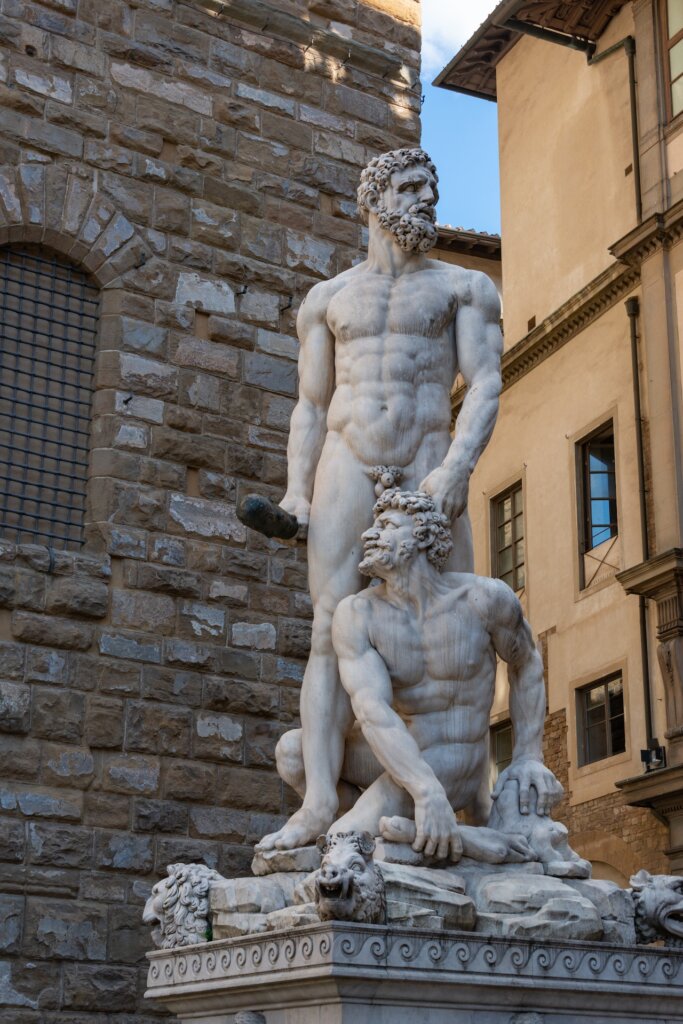
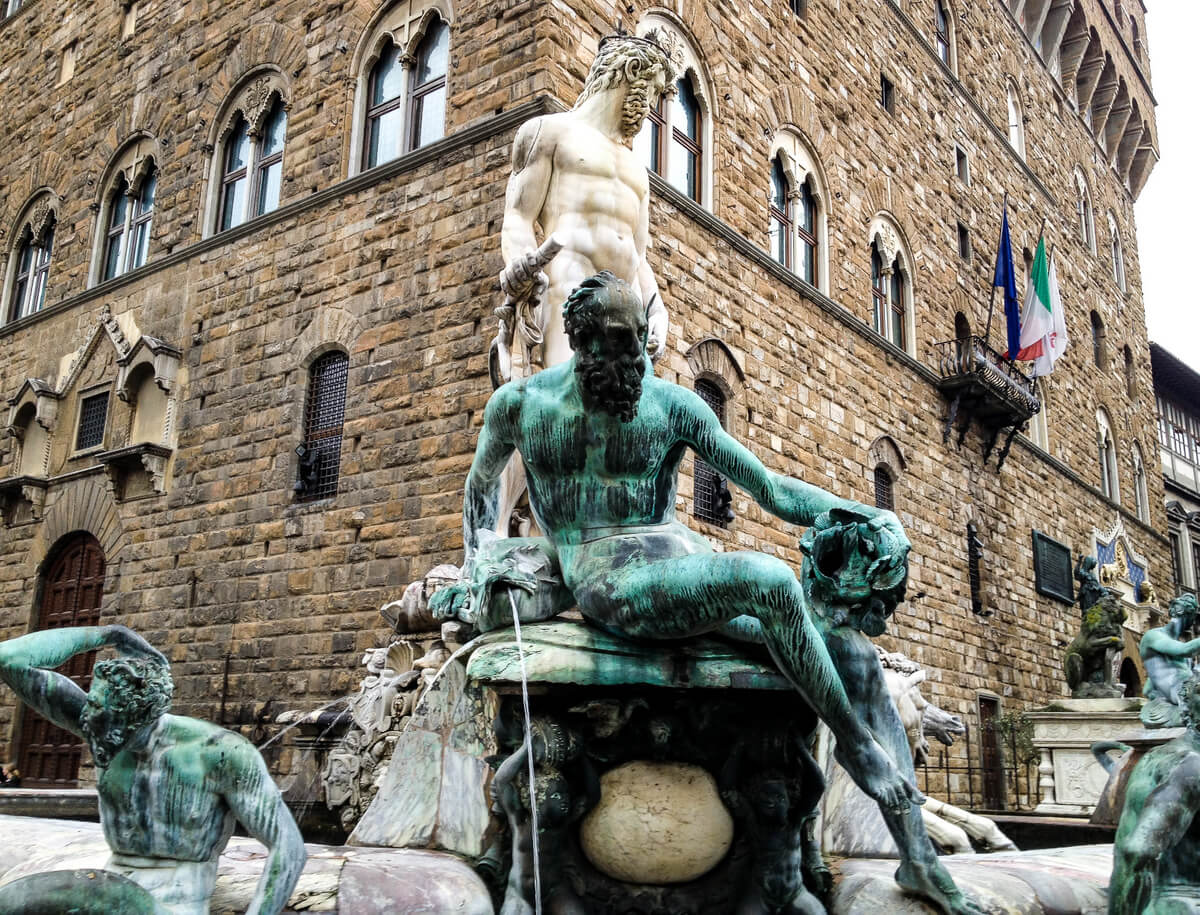
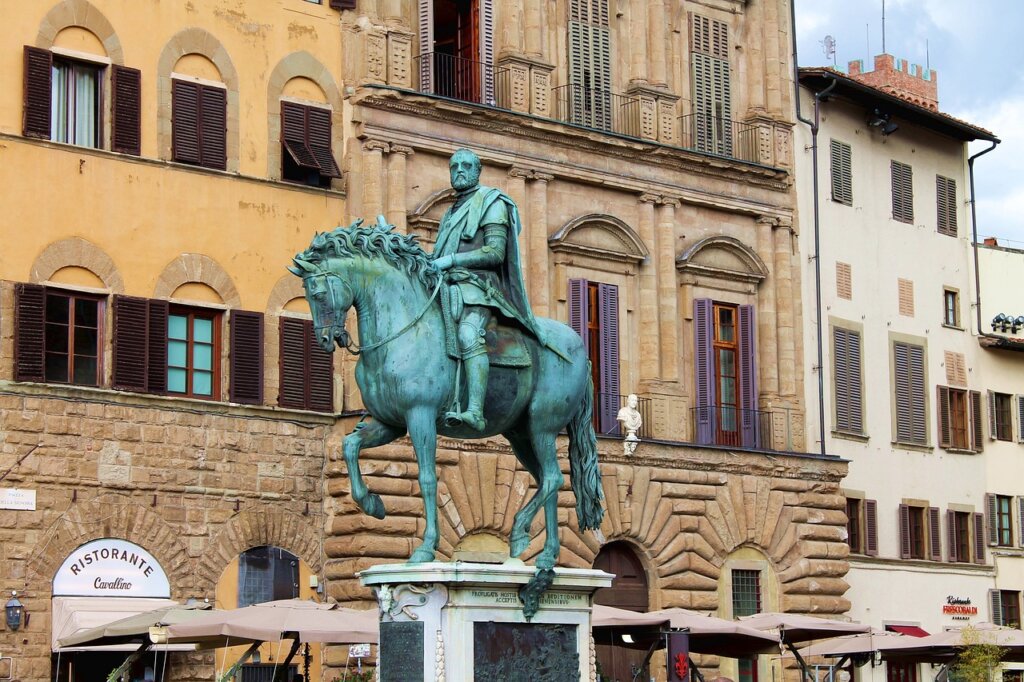
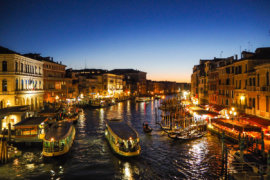

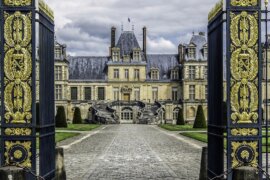
Jenna, I couldn’t agree with you more about how the city of Florence itself is a living museum filled with stunning masterpieces around every corner from its architecture to its outdoor sculpture. A magnificent tribute to the Renaissance, this city offers its visitors a rich and cultural experience that you so brilliantly captured in your writing above. Thanks for this great roundup of the best of Florence!
Thank you for your kind words, Jeff. Of course, I agree with you about Florence. You and I could go on and on about it! 😉
I haven’t been to Florence in ages but I do remember all these beautiful sculptures – such a fantastic art city!
Yes, it is. And so much of it is right outside!
You are absolutely right – Florence is like an outdoor museum and exploring sculptures during winter evenings is such a great idea.
Thanks for stopping by! And I agree, the evening hours are a bit magical.
Absolutely wonderful, I’ve been to Florence only once and longtime ago, but it’s stunning, I would love to go back, I have many friends living there so it’s very likely I’ll go visit them soon 😉
How fun to have friends to visit in Florence! You should visit but maybe go in the winter when it’s not so terribly crowded…?
Love this!! Especially that you don’t need to be in a museum to see art. Cities that embrace and promote public art make me so happy.
I completely agree. Thanks for the comment, Erin!
Thanks for a well-informed/well-written piece. Florence is definitely a living museum– and
many of these pieces were considered avant garde in their original unveiling. But what about modern and contemporary pieces? Surely Firenze has more than just these Renaissance archetypes?
Thanks for the comment, Erica. To be honest, I have no idea about contemporary or modern pieces in Florence. When I was there, I was fully immersed in all things Renaissance and the periods that came just before and after. I’d love to explore the art scene there next time I visit.
In the year 2000, the same Liggia dei Lanzi with all the Florentine sculptures had in the center of the Piazza dei Signori a smooth oval egg by a Japanese sculpture. It did seem out of place but made a great pedestal for many curious children, mine among them. The Japanese tourist had a field day photographing all these little blonde urchins on their Japanese art.
Florence has such wonderful art everywhere. I remember my then 7-year-old was a bit embarrassed to see David in all his glory, though 🙂
Lol. I can imagine.
Part of the reason I love Florence as you do is for its wealth of art outside, accessible to all. I would walk by Piazza della Signoria everyday on my way to school for several months. It’s amazing how much sculpture the piazza contains and how very few stop to marvel at it.
I had some pretty amazing daily walks through Florence, too, when I was studying there. And you’re right, this piazza contains quite a collection. Hard to believe when you stop to think about it.
I LOVE these that you highlighted! Every time I’m in Florence I wonder what it would be like to have sculpture like this to look at on say, your daily walk to work. How amazing would that be? And it’s just EVERYWHERE! Nice pix too : )
This is awesome. I would much rather see beautiful art outside than in a museum. Gorgeous photos.
love your photos!